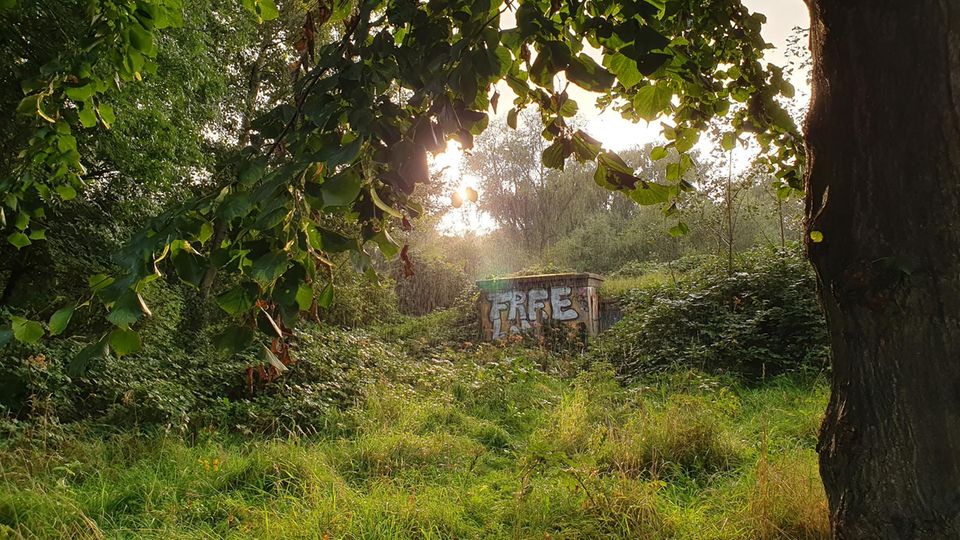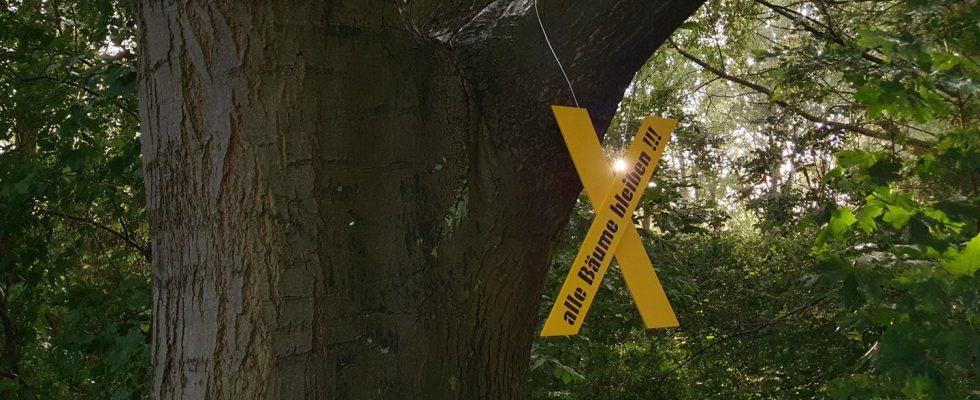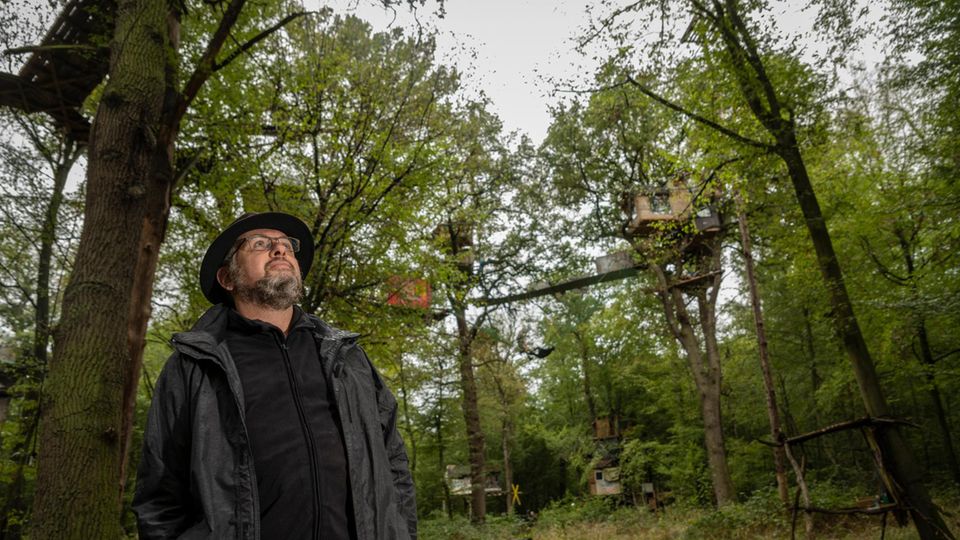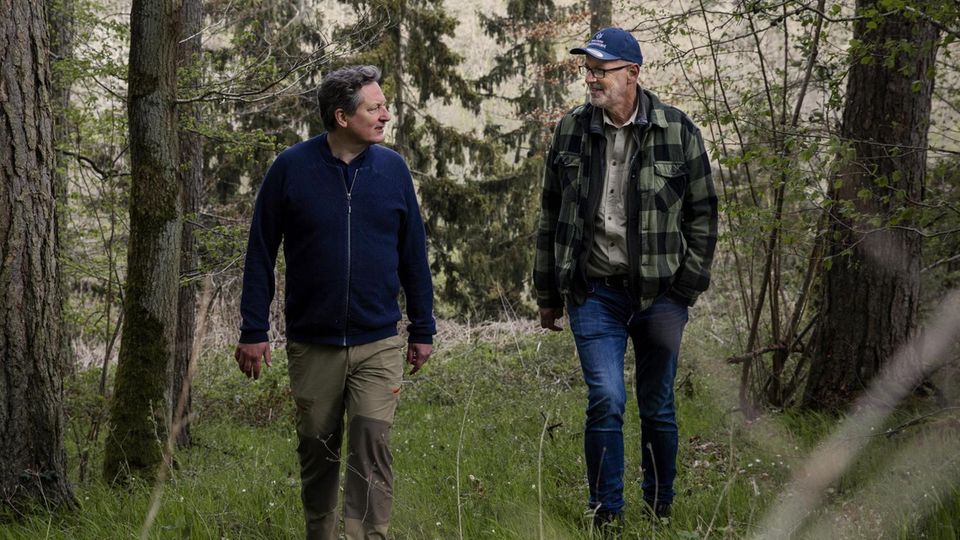In order to truly protect biodiversity, we need a completely new idea of nature. Because it is more than just a Caspar David Friedrich painting. For more wild forests in the city and in the country! Every tree counts!
Our forest. Who doesn’t love him? Especially in Germany people are downright crazy about him. Isn’t it wonderful, our forest? The cathedral-high beech greets the passing evening clouds, whose belly is colored pink by the setting sun. Towards midnight, the old oak tree with its gnarled branches reaches for the moon, which bathes the hidden clearing with its pale glow. Just look how mysterious!
Caspar David Friedrich, now 250 years old, would immediately sit down in the damp moss and read one or two Eichendorff poems to calm his frayed nerves. The fern tickles his pale calves, a confused robin begins its night song. Finally, our Caspar picks up a boar bristle brush and paints a selfie from behind in front of an impenetrable thicket. Magical.
But sometimes our romantic idea of the forest blocks our view of our true treasures. Then we can’t see the forest because of all the tree clichés.
A jungle in the middle of the city
For example, there is a very special rarity in the metropolis of Hamburg: a real, functioning pioneer forest in the hyper-urban district of Wilhelmsburg. Of course, no one would expect a forest idyll in the center of this densely populated Elbe island: the harbor railway squeaks in the distance, truck traffic thunders around it, and customs are looking for smugglers on the adjacent Georg-Wilhelm-Straße. But hidden in the middle of all the urban hustle and bustle is a veritable jungle. Of course, you can only see this once you’ve cleared your head of the usual jungle clichés. But just look closely: Don’t those branches over there hang over the Prince August Canal like in the Amazon?

Over 60 years, a pioneer forest has gradually taken over the heavily compacted urban area
© Stephan Mouse
This extremely valuable urban natural space is called the “Wild Forest”. It is about ten hectares in size and was built in the 1950s. This forest area was previously an allotment garden. In the post-war housing shortage, many makeshift homes were built on the site. Then on the night of February 16th to 17th, 1962 came the Great Flood. A Hamburg trauma. And since the area is lower than the surrounding, built-up neighborhood, a particularly large number of people drowned in their improvised structures. Their accommodation had no second floor to which they could escape.
After the Great Flood the area was completely fallow. And then nature came and showed everyone what it can really do. Today the Wild Forest is a particularly beautiful example of a dense pioneer and successional forest with parts of riparian forest. It is the only forest in the entire Hamburg-Mitte district. Poplars, willows, alders, birches and ash trees grow here. The woodpecker is hammering in the dead wood, please not so loudly, after all there are bats still sleeping here (five different species!). A kingfisher flashes past and plunges headfirst into the Ernst August Canal to catch a fish.
Anyone who walks through this urban wilderness immediately gets an idea of the power that nature can develop if you simply let it do its thing alone. And what could be more comforting in today’s times than such an experience?
But because humans are the stupidest of all animals, the Wild Forest is now threatened with deforestation. The new Spreehafenviertel is to be built on the site and in the neighborhood: 1,100 apartments and businesses.
Trees against the tide
While other metropolises are thinking about how they can transform themselves into sponge cities in order to survive in times of climate change, Hamburg continues to seal up areas. The fact that this should now happen in an area where numerous people drowned in a once-in-a-century flood is particularly grotesque. Because if anything protects us from coming floods, it is trees.
That’s why there was early protest against the planned clearing. Today the Wild Forest is occupied by activists. They built a tree house to prevent felling. In January, NABU handed over 20,000 signatures against the clearing of the Wild Forest.

The proximity to the harbor can be clearly felt in the Wild Forest in Wilhelmsburg
© Stephan Mouse
The city is currently of the opinion that this forest is not really worth protecting. Ultimately, highly official experts come to the conclusion that the Wild Forest isn’t all that interesting. There are just vulgar, commonplace trees around, with a few weeds in between. Stuff like this can be found on every disused railway track. What nature is in After all, what Germany produces on its own cannot be that valuable. Besides, the banal green stuff is only 60 years old. You can actually cut it down straight away. Not that it will be 200 years old and will need to be protected at some point. Where should we expand then?
Compensatory areas are usually created somewhere else to replace destroyed biotopes. No matter where. In the case of the Wild Forest, 40 kilometers outside of Hamburg. Let the kingfisher google where he can soon eat his herring from the Ernst August Canal.
Such an approach is grotesque: You wantonly destroy naturally grown areas, dump topsoil from the wholesaler somewhere, bury a few trendy climate-friendly woods and spread around it two wheelbarrows of mulch that you have lovingly shredded from the trees that were previously cleared somewhere else. One has the impression that people only really respect nature when they have planted it somewhere with their own hands. We are not really interested in what nature itself can do.
An appeal for Forest Day
Such ideas are fatal. We should begin to understand that a forest does not necessarily have to look like Caspar David Friedrich painted it to be worth protecting. A tree does not have to be on any species protection list in order for it not to be felled. We must understand that every plant and every tree per se are worth protecting. And if they have developed into a diverse natural area on their own, they are doubly worth protecting.
That’s why on today’s Forest Day we should not only honor the rustic oak grove, but above all the spontaneously grown willow bushes on the wasteland behind the cheap gas station, the brave birch pioneers that sprout from the disused railway tracks and all the other wild forests – in Wilhelmsburg and elsewhere.



